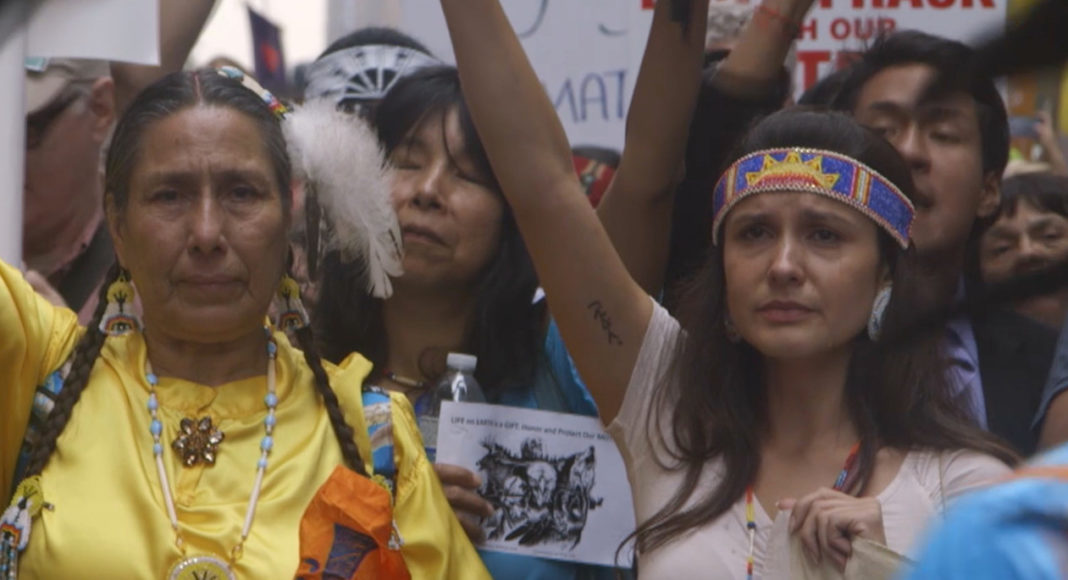The Condor and the Eagle (2019) is a prize-winning documentary film directed by Sophie and Clément Guerra, about the collective struggle of the Indigenous peoples of North and South America to defend their land and water against the oil and mining companies that have occupied and desecrated their homelands and their environment.
Screening in London for the first time on 11 and 21 February 2020, Linda Etchart talks to co-director Clement Guerra about the making of the film, and the ways in which the project has created links among indigenous communities over the American continent. This interview first appeared in LatinoLife. You can see the original here.
The Condor and the Eagle (2019) will be screened in London at Fusion Film Festival – Friday February 21st at 6:55pm – Room 2, The Crowne Plaza – Royal Victoria Dock,Western Gateway, Royal Docks, London E16 1AL.
What made a married couple give up their comfortable lives in Europe and fly across the world to tell the story of solidarity among the indigenous women of the Americas?
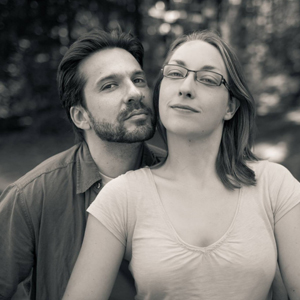
Back in 2014 Clément Guerra, French, a 37-year-old international marketing manager working in London and his German wife Sophie, studying pharmacy, could have settled down to a comfortable middle class life. But instead they took their savings, flew across the ocean and arrived in New York. Fast forward to 2020, their film follows indigenous American women, from the Ecuadorian Amazon to the Tar Sands protests in Alberta, Canada, via the Texas oil fields, in their fight to preserve the livelihoods and culture of Indigenous communities and to protect the earth from climate change. It took the couple 5 years to finish the film, from development, to filming to production and post-production, which was premiered at the Woodstock Film Festival in New York State in October 2019.
I met Clément for the first time at the Emergency Rainforest Summit in Brooklyn, New York in September 2019, during New York Climate Week, when we were competing to take photographs of the indigenous leaders of the Amazon who were calling for global solidarity to protect their lands and their cultures. Since then, our lives crossed many times, so I managed to find out a bit more about the making of their amazing documentary.
Linda Etchart: Can you tell me what gave you the idea for the film?
Clément Guerra: Both Sophie and I come from marketing and health backgrounds; we did not intend to produce a feature film. We wanted to use our media and community organizing tools to support the Climate Justice Movement and facilitate regional and international alliances. After two years of travelling around the American continent, we made 12 short videos centralizing environmental issues. Within six months, we realized a bigger story needed to be told to the world.
As we took a step back, we realized that the dots connected and that these short stories, seemingly isolated, came together organically into a feature film format. The Condor & the Eagle is our first full-length documentary: it has already been selected by 45 film festivals across North America and has won 12 awards, including Best Documentary Film at the Red Nation International Film Festival in Beverly Hills.
LE: Can you tell me more about the ‘dots’ that you connected to make the film…
CG: We had heard about a gathering of the Cowboys and Indians Alliance, where the oppressor and the oppressed would come together and unite their efforts to expose the destruction taking place as a result of the laying of oil pipelines. It was one of the first large climate justice gatherings in North America. We quickly realized that this was the beginning of the global Climate Justice movement.
It was at the time of the Keystone pipeline, affecting communities from Houston, Texas to the Tar sands of Alberta, Canada. Energy companies are actively planning to triple Canadian tar sands production (the world’s largest industrial project) in the coming years, which would mean “game over” for climate change. Such an increase in production is only possible if the planned pipelines are built and permitted in the US and Canada. The pipeline movement is to a large extent at the origin of the global Climate Justice Movement. Our four protagonists live alongside the pipeline routes and have played key roles in the fight against the oil pipelines.
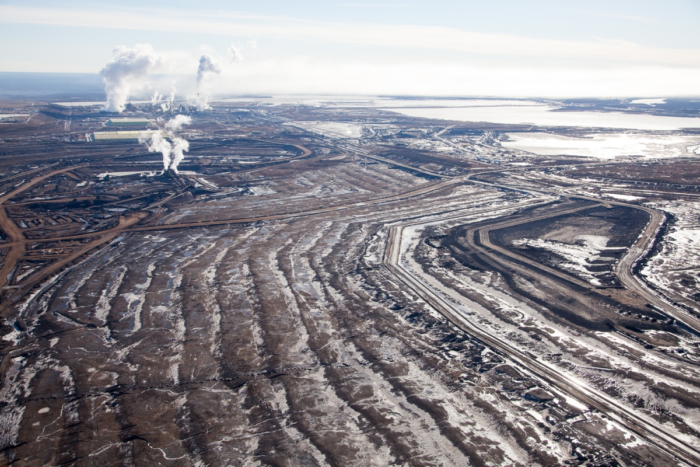
Many communities who were on the frontline of industrial development were starting to work together to challenge the refineries that were trying to get the special permits needed to receive oil from the tar sands and we started to interview and film communities affected by it and we put together a short film.
We started in Houston then in San Francisco, then we heard about an interesting gathering taking place in Canada: the Tar Sands Healing Walk. We were just living in a small camper van, so we drove the 1,000 or so miles to get there. We witnessed the health issues of the local residents: they had developed chronic respiratory problems, cancers and experienced social issues like unemployment and alcoholism. We also saw the pollution caused by the industry in the city of Fort McMurray, where thousands of oil workers live. These were all migrant workers from other regions, with no attachment to the land, and they were wasting the good money they were earning. We then flew over the area and deep into the boreal forest in order to understand the impact of the industry on communities living downstream and suffering from the toxic effluents from the tar sands extraction.
Then we heard about Melina Laboucan-Massimo [member of the Lubicon Cree First Nation and a Climate and Energy Campaigner with Greenpeace Canada] who was one of the organizers of the Healing Walk and Casey Camp-Horinek, from the Ponca tribe of Oklahoma. At The People’s Climate March in new York, attended by half a million people, we were so impressed at the respect that Melina and Casey commanded. In the front row were women from Ecuador: global environmental leader Patricia Gualinga of the Sarayaku Kichwa Ecuadorian Amazonian community and Gloria Ushigua, leader of the Sápara community, among others. And that is when I started to listen to Patricia, who was saying that the global North and the global South had to join hands and also liaise with the Rights of Nature movements and the Indigenous communities´ legal challenges to mineral extraction on their lands.
We could tell Casey was a bit skeptical about two white Europeans telling their story, but when we told her we had been travelling in our camper van for many months, from community to community, and that our hearts then told us to go to South America, she told us that she had been also praying for that to happen! She gave us her blessing and our film was set in motion. We fundraised for the expenses of four of our protagonists who flew separately to their communities in the Amazon rainforest in Ecuador and Peru.
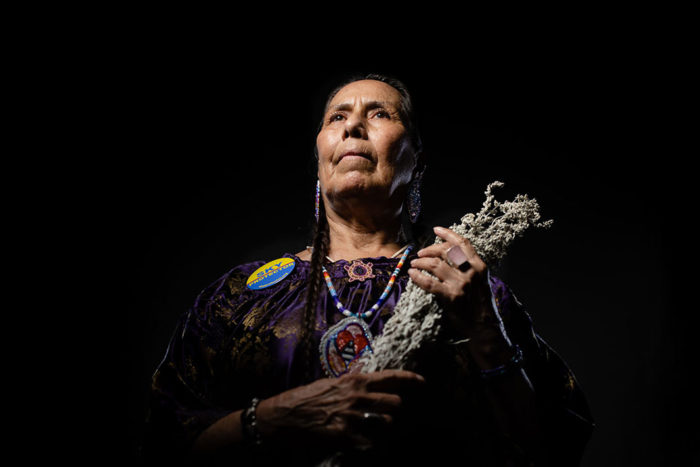
LE: How did you decide to organize the story line?
We decided to simply tell the journey of our protagonists from North America to the South American rainforest in order to build alliances. The film tackles complex issues in numerous regions in the Americas, issues most of the audience might be oblivious of. The film gives up the traditional documentary techniques of interviews and voice-overs; instead, the story is told through unfolding action and interactions amongst characters; while it was not easy to create, it was definitely rewarding. The documentary allows indigenous and impacted communities to speak in their own voices, unlike most social justice documentary films.
Directing a film on grassroots resistance doesn’t need to be patronizing as long as we build a storyline based on the emotional journey of “normal” people striving towards achieving personal goals. Our program had to leave most of the politics aside by unravelling a tale of inner strength and inspiring courage.
So we started with the tar sands, now the largest extractive industrial project in the world, and our priority was to support the Indigenous communities protecting the land and to see how the Northern and Southern global alliances could work together.
It was very important for us that this film would not just end up being an ‘activist’ piece of work. We also wanted to show how many of the Indigenous communities had no choice but to work in the extractive industries, and that many of their members were supportive of those industries because of the job opportunities they gave them, especially after losing their traditional lands. So we wanted to show their side of the story, as well as that of those who wanted to keep the oil in the ground.
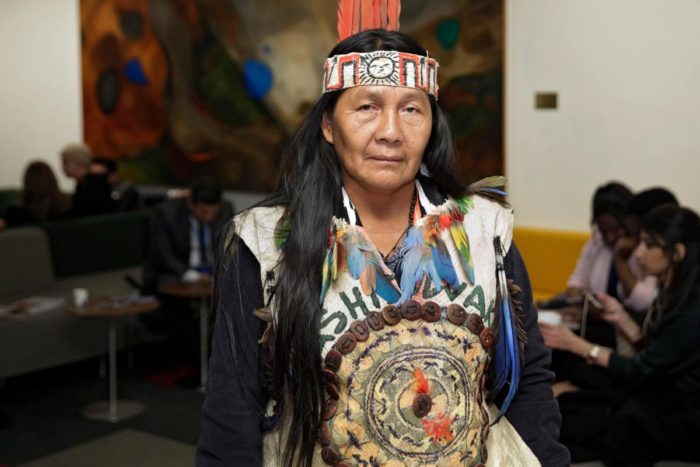
LE: Tell us about your first experiences in Ecuador, in the rainforest...
CG: The spirit of the rainforest is something that white people going there do not easily understand. In the Climate and Environmental Justice movements it is usually said that people will not defend something they do not have a feeling for. Why would you actually defend something you don’t love, or of which you don’t have personal experience?
So we tried to immerse the protagonists and the audience in this magic, so they can bounce off it. In the Sarayaku-Kichwa culture, they have a philosophy called ‘kawsak sacha’ — ‘the living forest’ — meaning that the forest is not just a bunch of trees or animals or insects; it is more than that, it is the spirit of the forest that contributes to the balance of the natural world. When colonialism encroaches on the Amazon forest, the spirits will die and the whole balance of the planet would just collapse. So what is happening in the rainforest affects us all, and also our economic and political system.
LE: Why was Ecuador so important to the film?
CG: In Ecuador and close to the Colombian border, Chevron/Texaco spilled millions of gallons of oil, creating an environmental nightmare and producing terrible toxicity in the rivers, and yet, not that far away, there are still areas of pristine biodiversity. That is mind-blowing when you consider how close to that region natural habitats were totally destroyed. As we started to work there we heard that the government was planning to sell the land to Chinese industries, in a country like Ecuador which has been the first country to enshrine the Rights of Nature in its Constitution. That was a big contradiction, to put it mildly.
So we knew that we had to involve the protectors of the land, especially the Sarayaku-Kichwa, who, for generations have been the protectors of the environment and led the way in enforcing prior consultations [Free, Prior and Informed Consent according to national and international law] with local communities in countries where the governments were planning to sell or exploit their land. Indigenous people form 5% of the population of the planet, but they live on 20% of the land and 80% of its biodiversity, so naturally, they have to be consulted! You remove the Indigenous people and the game is over for the planet.
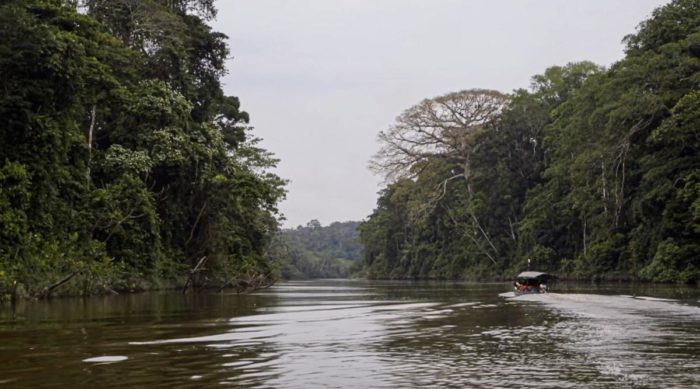
LE: There are a number of communities where increasing numbers are working for the oil companies, and there are less and less individuals who are resisting them. The oil companies are paying large sums of money buying the support of the communities particularly from those who do not have other sources of income, so how do you see that question?
CC: It is a very good question; our film is just a film, but when we travelled, we were involving the local communities in the process of making it. We would show our work in progress, depicting how the communities most affected by extraction, although struggling to survive, were actually at the forefront of shaping the movement of tomorrow. Our film also shows that impacted communities define themselves by the feeling of isolation. They are saying: “We were left alone, the government has abandoned us, we die of cancer and other illnesses.” And we highlight in the film how those impacted communities can actually make the difference and lead the way forward.
Unlike so many depressing environmental films, ours is deeply empowering and presents itself as a handbook for social movements and cultural change. Indeed, our story starts small with local impacted marginalized individuals who decide to no longer accept to be the victims of an unjust system. Overcoming the feeling of isolation, they manage to grow regional support networks, progressively gaining national visibility. Eventually, they rise as international leaders taking the fight from the streets to the courts (Tribunals, Consultations and Reforms) and inspire others to help change our system’s architecture.
Last but not least, The Condor & The Eagle brings to light the fact that we need a cultural shift and not only a technological revolution. Many people respond to the climate crisis by looking to technology and consumer decisions. By focusing on Indigenous people, The Condor & The Eagle shows that without systemic changes in our culture and values, we will never recover from the destructive path on which we are embarked.
LE: Where are you going next, and what are your next steps?
CC: We have decided not to sell our film rights to TV channels as it would somehow mean that we are stealing the film away from communities and groups who can benefit from organizing around the screening of The Condor & The Eagle. We are therefore taking the steps needed to “liberate” the film! We are handling its distribution ourselves, independently. It is exciting but it definitely represents a lot of hard work – we hope to succeed as we already have powerful and long-lasting partnerships in place.
We are currently planning hundreds community screenings with our key partners: 350.org, Sierra Club, Unitarian Universalist Association, Council of Canadians, David Suzuki Foundation, Indigenous Climate Action, etc. The idea is to organise as many screenings as possible this Spring, Summer and beyond. Despite the vacation season and the turn of the year, many groups and communities have already committed to screen our film around (but not exclusively) Water Day in March and Earth Day in April – that is simply incredible! We will kick off our impact campaign at the occasion of Water Day, March 22nd. We will be on the road again from March until September 2020, travelling across the US and Canada in a motorhome – with our 2 babies.
LE: What is your main goal with the documentary?
CG: Each screening is the occasion to raise funds for our impact campaign and helps seed more projects in the coming years. Likewise, we are encouraging groups and organizations to use the film as a way to elevate and amplify local grassroots campaigns and issues.
By showing the film around and by setting up story-telling workshops in North and South America, organizing events and working with social media partners in different forums we can keep supporting community-led initiatives to reach out to others in order to build alliances, to network and gain visibility. We strongly believe that such campaigning work can make changes happen. We are hoping to keep raising funds through our work in order to support Indigenous and other community leaders to carry on their work, and also to use these platforms to come together.
Our work has not finished with the film, we are just getting started! We hope that in a few years, we will be unemployed, because, by empowering communities, they will be able to tell, and document, their own stories. And that is our job; not to jump to the next story just because we want to make films, but rather, we want to understand why we are making films, and to give back to the communities.
I don’t want to be an ‘extractivist’ film-maker, but one that works hands in hands with communities.Winning film awards shouldn’t be a goal in itself, and media work can also be understood as a service to others and a contribution to social change. On a personal level, this whole experience helped us face our own privileges and we quickly realized that the pollution outside reflected the ego-toxicity we are carrying on the inside. We have been conditioned to believe that we are skin-encapsulated egos, that we are each an “I” separate from every other “I.”
Interconnection is a central core of First Nations’ worldviews and ways of knowing. Thanks to our journey and the process of making this film, we came to realize that we all depend on each other, we are not separate – we are strongly connected to our communities we live in, our ancestors and future descendants, the land we live on, and all of the plant, animal and other creatures that live upon it.
Now that our documentary will be distributed to hundreds of communities throughout the country, we are inviting privileged people to follow our footsteps and join the call from Indigenous and impacted communities. By filming the protagonists traveling into the heart of the Amazonian forest, we illustrate how the direct relationship between people and nature presents itself as a way out of our colonial imprint. We are inviting you all to begin the journey towards rediscovering our natural roots
The London premiére of The Condor and the Eagle was at Film Fest International on 11 February 2020
Linda Etchart is a climate activist and researcher on the extractive industries in the Amazon rainforest and author of “Indigenous Peoples and the Rights of Nature” in Voices of Latin America: Social Movements and the New Activism, published by Latin America Bureau in 2019, and co-author, with Leo Cerda, of “Amazonians in New York: Amazonians in New York: Indigenous Peoples and Global Governance” in the journal City: Critical analysis of urban trends, culture, theory, policy, action ((forthcoming February 2020).

